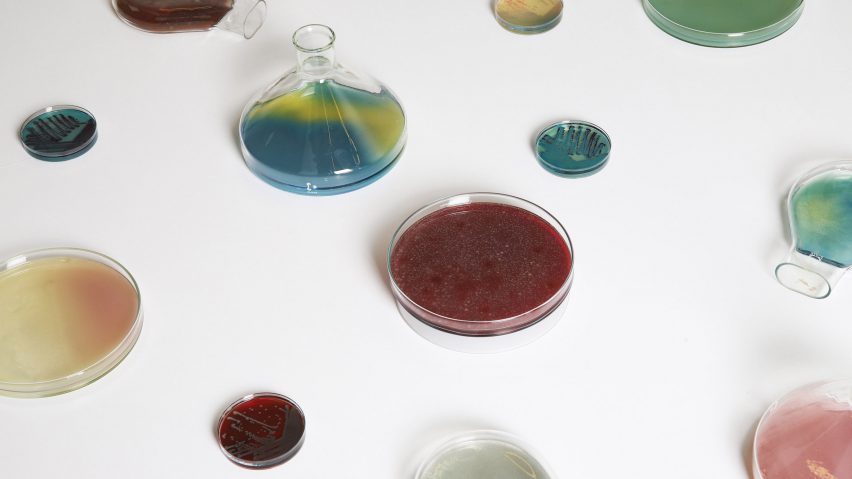
Jan Klingler's Bacteria lamps are "modern fossils" as well as lights
Bacteria cultures grown on resin plates decorated these LED lamps by designer Jan Klingler, on show as part of the Young Swedish Design exhibition at ArkDes in Stockholm.
The lamps come in two versions, a round light that can be hung on the wall and a table lamp reminiscent of a laboratory flask, but both centre around a disc of brightly coloured bacteria.
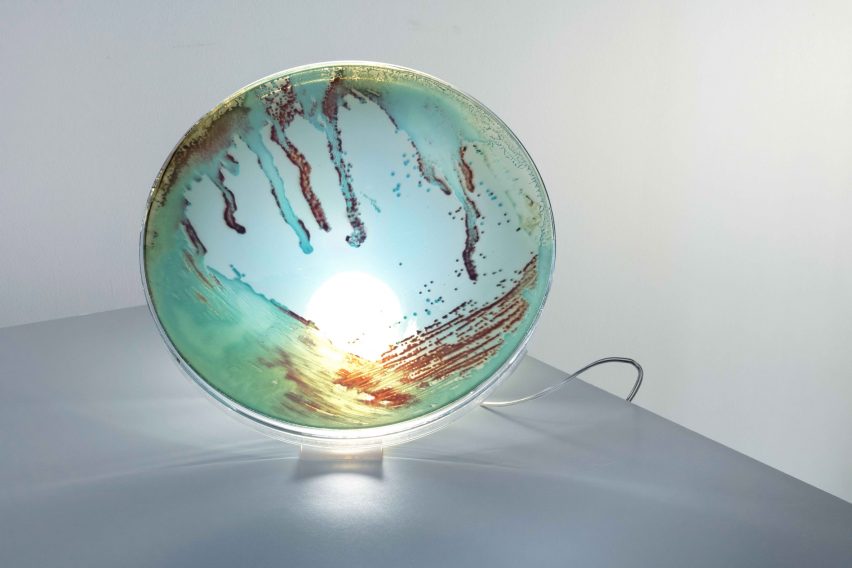
The Bacteria lamps merge Klingler's interests in industrial design and microbiology. After his "eureka moment" that the two disciplines could be combined, he worked with a microbiologist at the university hospital in Stockholm to develop the idea.
"I wanted the aesthetic to be very inspired by laboratory work, because usually when you have bacteria growing it's in petri dishes in the lab, so I wanted to make it quite abstract but still reminiscent of a laboratory," he told Dezeen.
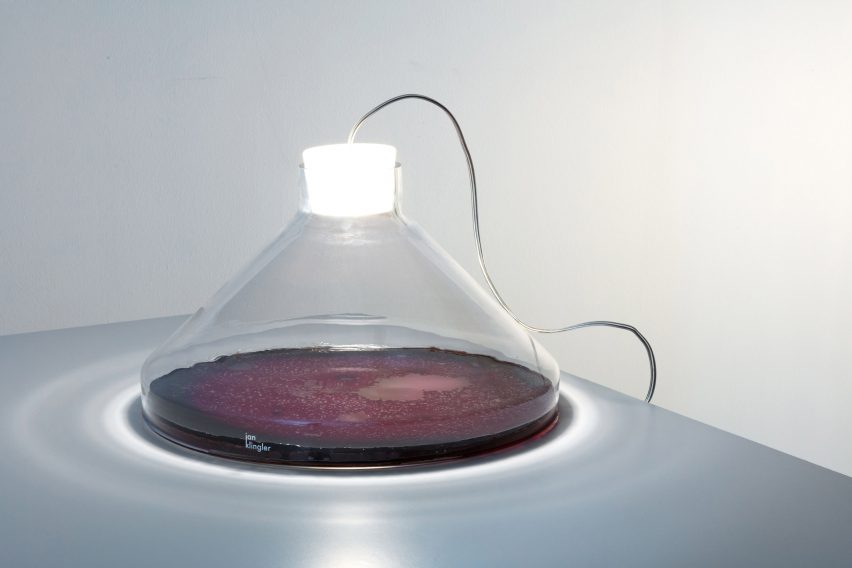
To create the distinctive speckled designs, Klingler collects bacteria, yeast and funghi and leaves them to grow on a resin disc for between 24 and 48 hours.
In order to multiply, the bacteria requires a source of nourishment such as agar, a gelatine that comes from seaweed.
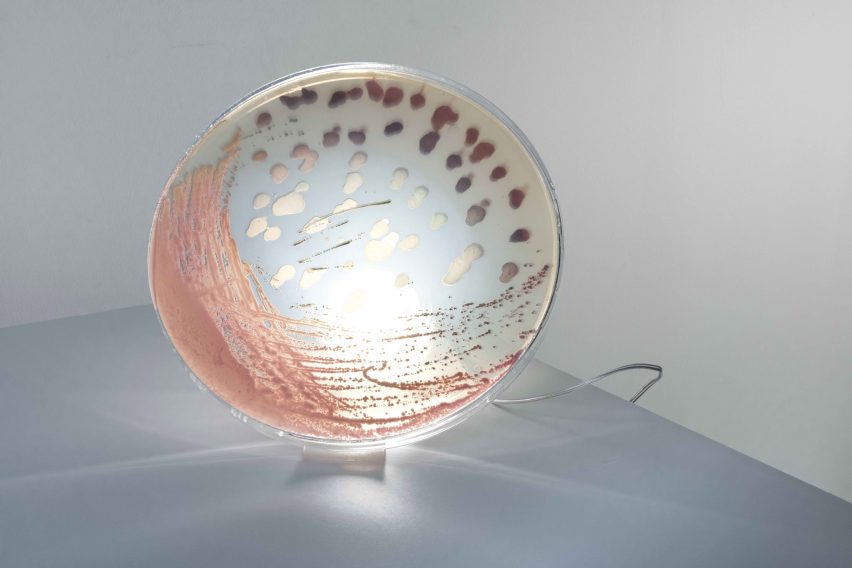
At the beginning of the process the ground is very fluid, but it then begins to harden and at this stage Klinger adds the bacteria and allows it to grow.
The various colours are produced either by the bacteria itself – for example serratia, a bacteria found in the mouth, gives a strong orange-red colour – or from the "nourishment ground".
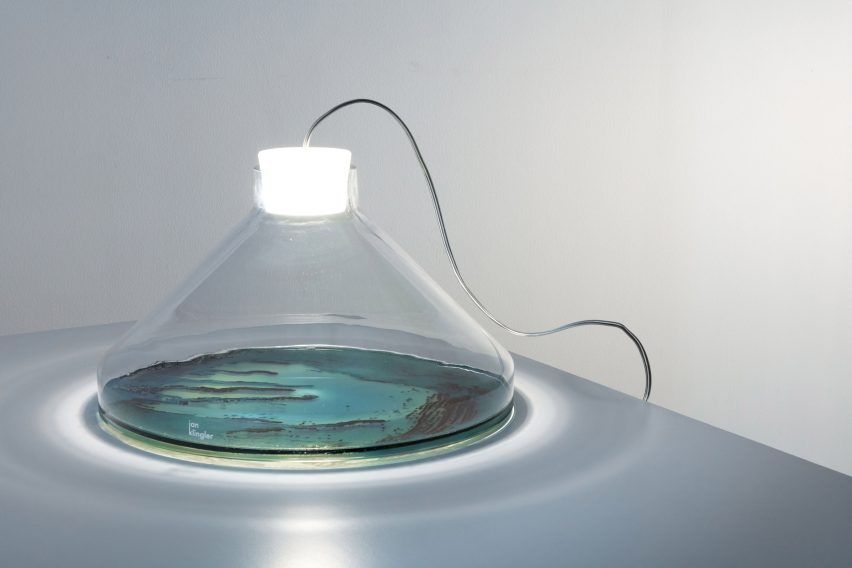
"Sometimes it's more controlled, sometimes it's less controlled. It depends on the nourishment ground that I use," explained Klingler.
"Some are created by chemists. There was a French chemist that got really frustrated that he couldn't tell the different bacteria samples apart, so he made a nourishment ground that colours them differently."
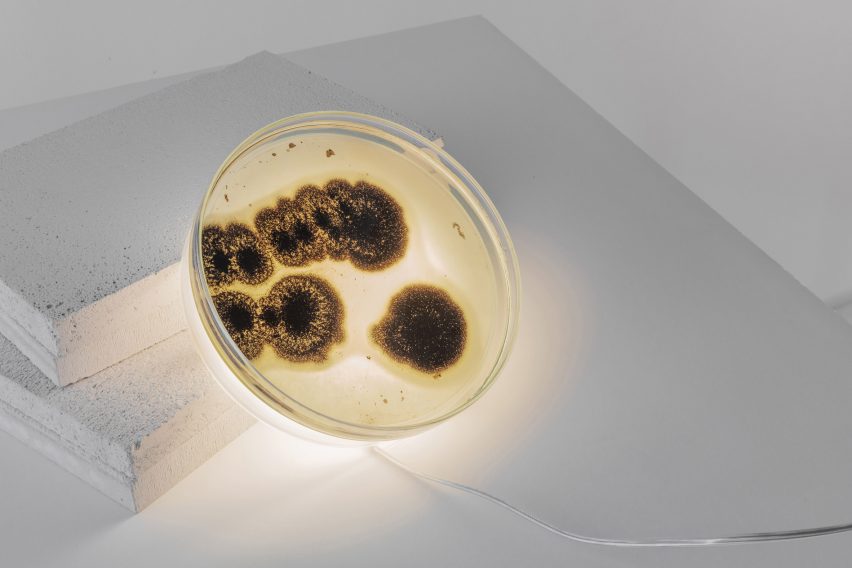
Klingler often grows different cultures in small petri dishes, before mixing pipettes of various solutions, and applying them in strokes or drips.
To create the designs in the flask-shaped lamps, he must pour resin into the flask, then create a silicone ring around its edge, before adding the bacteria culture.
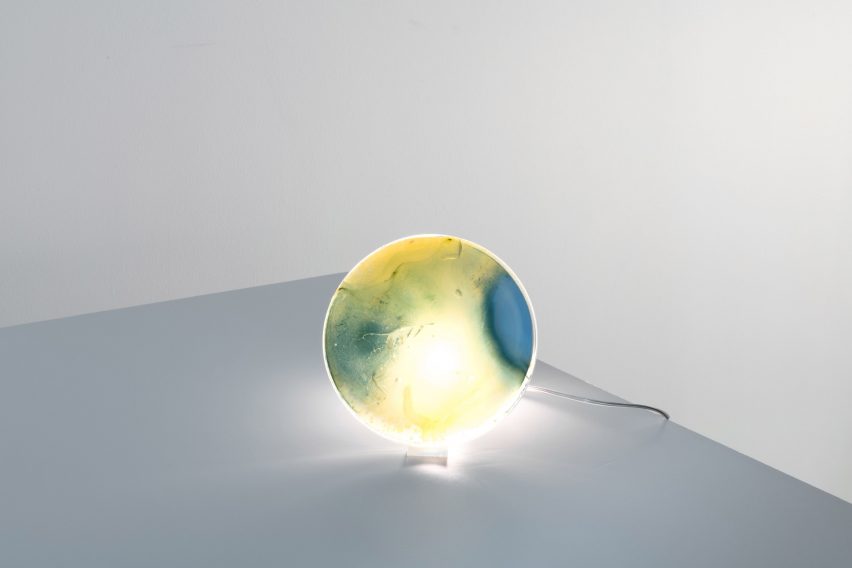
Once the desired effect has been achieved, he seals the discs by placing another disc on top. This deprives the cultures of oxygen, so they stop growing and become what the designer describes as "modern fossils".
Klingler then wires the resin plates up to an LED disc or a set of LED modules that shine through the bacteria cultures to provide a light source.
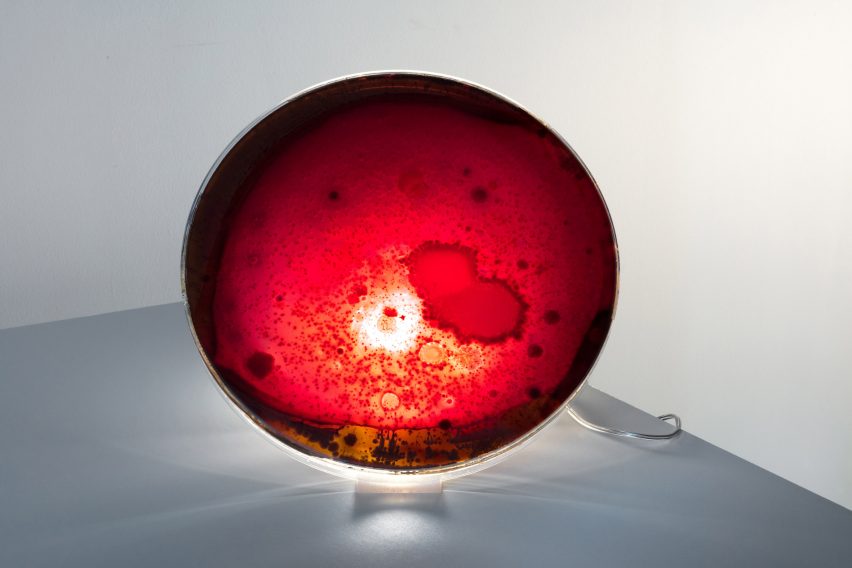
"As an industrial designer, for me it's very much about figuring out the technical aspects," he sais. "The bacteria takes over the artistic side as when I add it; it's transparent so you have to wait and see what will form."
In future, Klingler plans to take commissions for bespoke lamps. He will use bacteria harvested from swab samples that he sends to clients to create a unique personalised lamp.
"When I started out I wanted to make objects that tell a story, to create a strong bond with the user," explained Klingler.
"Every place and every person has their own microbiological fingerprint. So I would like to send out little swabs to people so they can swab whatever is important to them."
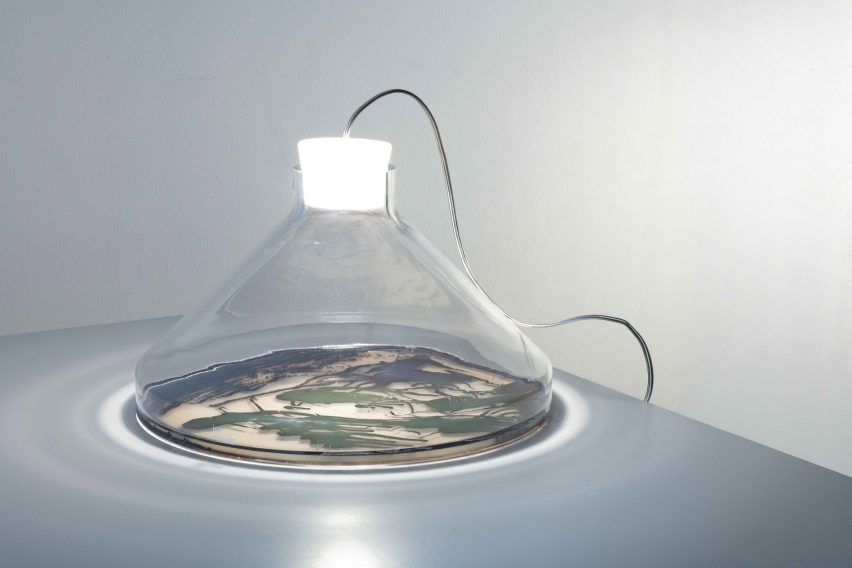
By swabbing a particular person or place and sending him the sample, he will make a lamp that has a connection to the person or place used to create it.
To test the process, he has created a light using bacteria taken from the lamp post where he met his partner.
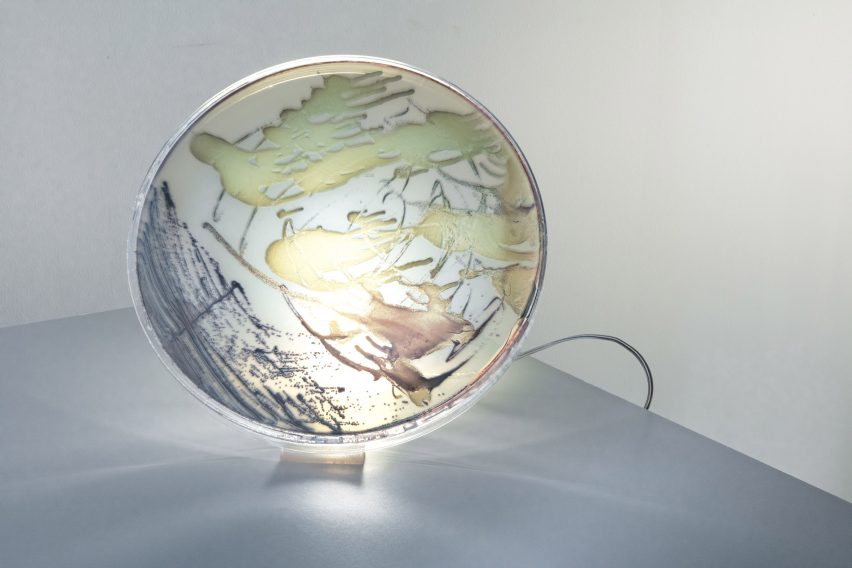
He suggests that as well as a first date, the lamps could be a personal souvenir from "travel to the Eiffel Tower in Paris or of a loved one far away. The possibilities are as individual as each one of us".
Bacteria lamps are part of the Young Swedish Design exhibition at ArkDes, the museum of architecture and design in Stockholm, until 31 March 2019. Klingler also showed the lamps at Greenhouse, part of the Stockholm Furniture Fair that ran from 4 to 8 February 2019.
Similarly, Italian designer Emma Sicher looked to bacteria for her eco-friendly material Peel to Peel, which could provide an alternative to disposable plastic packaging.